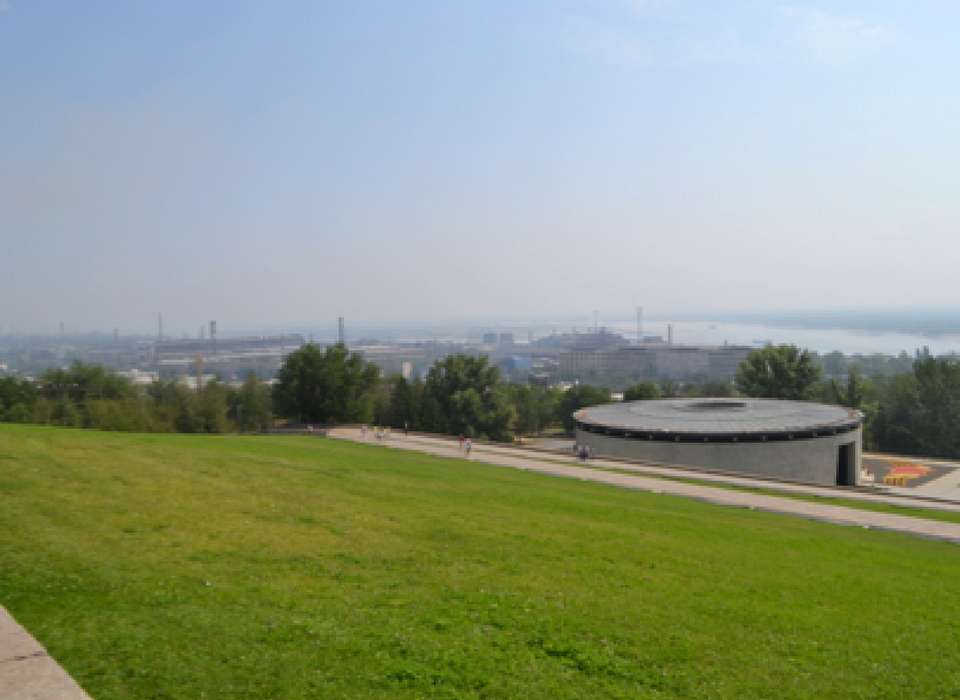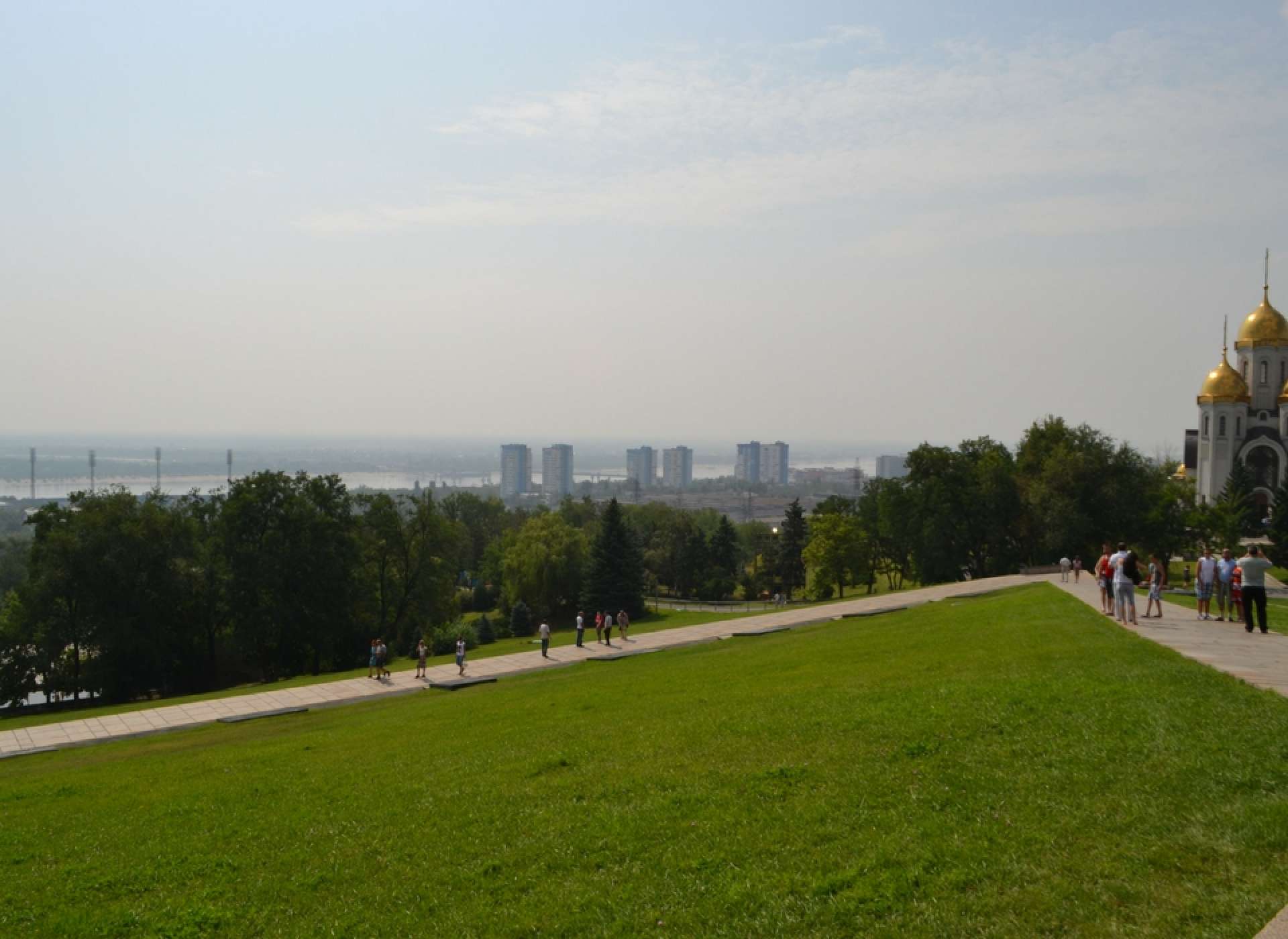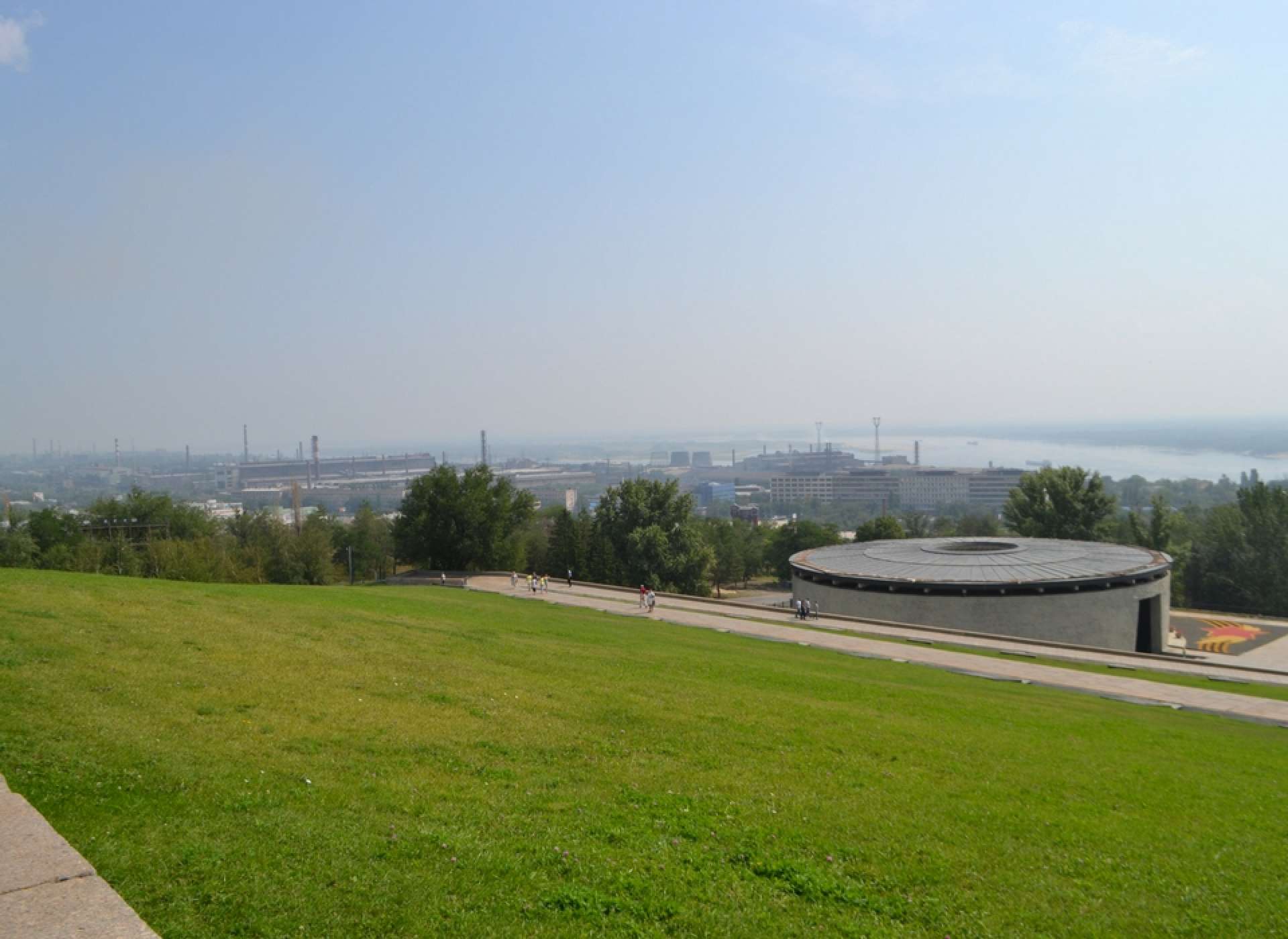On the afternoon of Sunday, August 23, 1942, just over 75 years ago, Adolf Hitler’s quest for Lebensraum—living space for the German empire—reached the banks of the Volga River, just north of the city of Stalingrad (now Volgograd) deep in Soviet Russia. The Fourth Air Fleet began aerial bombardment of the city, dropping more than 1,000 tons of bombs that day. On Mamayev Kurgan, the dominant elevation commanding the heights overlooking the Volga from the center of the long city stretching along the riverbank, people scrambled from sunny picnics to find cover as relays of bombers began decimating the city.
The rising smoke served as a beacon to the advancing German 16th Panzer Division, which had started the day at the Don River and had relentlessly advanced over 20 miles. At 4 p.m., the soldiers reached the west bank of the flowing Volga, with the seemingly limitless expanse of Asia beyond the other shore. “The Volga is reached!” read a caption accompanying photographs of the scene. Victory appeared to be assured.
In 2013, I was the historian for a Museum tour of the Eastern Front. Photos taken during that tour of the Volga from atop Mamayev Kurgan are below.
Find out more about our Educational Travel program.
-

The long view south of the city along the Volga River. Image: Keith Huxen.
-

The vista from a top Mamayev Kurgan, with a view to the north of Stalingrad where the Germans were in 1942. Image: Keith Huxen.
Keith Huxen
Keith is the former Senior Director of Research and History in the Institute for the Study of War and Democracy at The National WWII Museum.
Cite this article:
MLA Citation:
APA Citation:
Chicago Style Citation:







![Max Fuchs, New York City cantor, sings as Rabbi Sydney [sic] Lefkowitz, Richmond, VA, conducts the first Jewish services from Germany.](/sites/default/files/styles/max_650x650/public/2025-10/image1.jpg)



